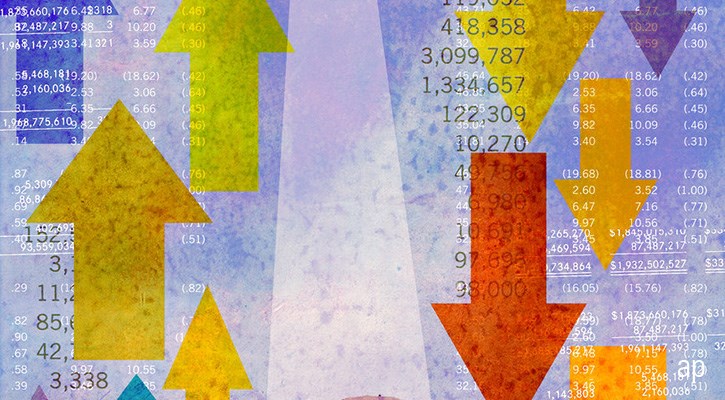
Why do investors sell their funds?
In the case of individual investors, past performance is a key reason, finds a study by the Californian firm Research Affiliates. Not so for institutional investors. A 2018 CFA Institute survey shows that for institutional investors, data and confidentiality breaches are the number one reason for firing a manager. The second is poor performance.
But what is ‘poor performance’? Not everyone agrees on that.
Too often, "we judge a manager's performance over the past three years and, if he is below his benchmark, we show him the door and look for someone who will do better than the index," says Richard Guay, professor of finance at UQAM's École des sciences de la gestion.”
This judgment call is both deeply flawed, and wrong.
“Dropping the ‘weaklings’ of the past few years to recruit today's ‘champions’ is more likely to weaken rather than strengthen performance," says Dan Hallett, a principal at HighView Financial Group. It is striking that fired funds tend to outperform newly hired ones, two and three years later, he notes, pointing to a study that compares the performance of newly hired managers with strong track records over the previous two to three years to that of fired managers with below-average track records.
Past Performance Doesn’t Equal Future Results
Paradoxically, even the performance of the previous ten to fifteen years is not quite enough either. "To really determine if a performance is due to talent and not just luck, you need returns over 30 years," adds Richard Guay.
Well, finding funds with 30-years track records is not obvious. Hallett thinks a history of 10 to 15 years can very well do the trick. “Such a length of time is likely to contain at least one, perhaps two market cycles,” a key analysis point, he considers.
It's a tough call.
It’s About Style
Obviously, one should ask why the fund is underperforming. Very often, it hinges on the style of the manager, and the fact that his style has lost favour for a period of time. "That's the main reason for underperformance," says John West, managing director and head of client strategies at Research Affiliates.
"If a particular style has suffered over the past three years, it often regains strength over the next few years. But there's no guarantee of that. For example, we’ve witnessed in recent years a gap between growth and value like we've rarely seen in history. One might think that value could recover, but there’s no guarantee that it will," adds Guay,
For Guay, an in-depth analysis of a manager's stock purchases and sales is necessary to determine whether the fund’s lack of performance is due to a series of bad choices - indicating less talent - or whether it is due to one or two more important mistakes - rather indicating bad luck.
Dan Hallett advises looking at a complete market cycle, from the previous correction or crash to the present – that is not at a business cycle, which is usually shorter. If a fund has experienced two full cycles, all the better.
Ask some questions, like:
-How has it weathered the downturn?
-Did it take advantage of the recovery?
-Did it surf along easy rallies, or did it really dig up opportunities?
No Personality Cult
Guy Mineault, economist, trainer and speaker, believes that the attention paid to managers is uncalled for. Instead, the focus should be on the funds. Some criteria on which he focuses include the portfolio's price-to-earnings ratio compared to the sector average. "If the ratio is high, the portfolio may have limited upside potential," Mineault notes. We also want to know the level of cash on hand. Too high during a stock market upturn is too conservative, but in the face of a looming storm, it suggests that a recovery will be profitable.
Mineault also advises to avoid focusing on management fees that appear to be too high, "If a fund gives a return of 13%, I don't care if its management fees are 3%, but I do care if it has a return of only 4%."
With all respect to Mineault, Morningstar disagrees.
A Note on Fees
Canada is home to an environment of high fees. In Morningstar’s 2019 Global Investor Experience study focusing on Fees and Expenses, it was calculated that the asset-weighted median expense ratio for equity funds was close to 2%, one of the highest among 25 other developed countries.
As Morningstar Canada’s Director of Investment Research Ian Tam points out, “Assuming an overall cost of 2% to own a fund, if in one year a fund returns 6%, you’ll receive roughly 4% for that year. However, if the fund loses 6%, you lose 8% after fees.”
Over time the effects of fees are substantial. Tam calculates that in dollar terms, a $1000 invested in the index in 1998 results in a portfolio value of $4,500 after 20 years if there were no fees, but only $3000 if a fee of 2% was charged. Put in percentage terms, after 10 years, the impact of a 2% fee results in a difference of 18% less wealth when compared to no fees. After 20 years, that gap balloons to 33%. “You need to be diligent in monitoring the fees you’re being charged, because the fees you pay are detrimental to the amount of wealth you will end up with.“




















